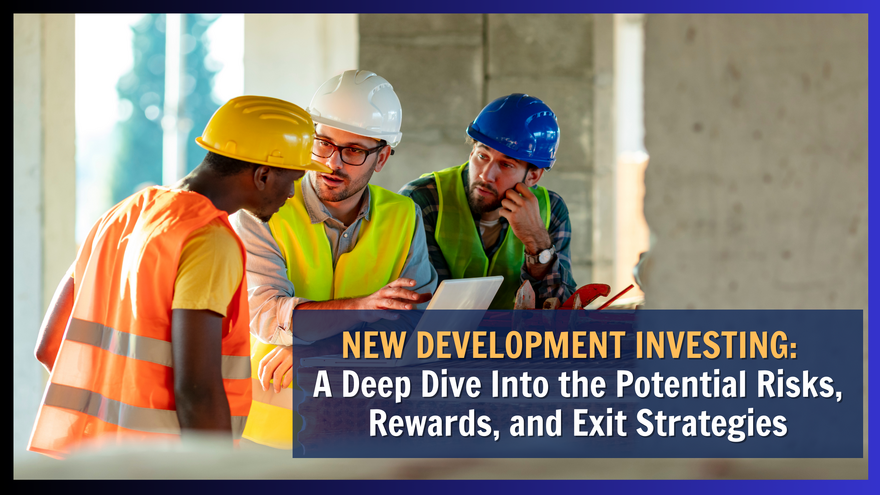New Development Investing: A Deep Dive Into The Potential Risks, Rewards, and Exit Strategies

Weighing the Options: New Development vs. Stabilized Apartment Investing
The world of real estate investment has seen its share of highs and lows, and savvy investors are always on the lookout for fresh avenues to secure their financial future. One intriguing path that has garnered attention is new development investing, commonly referred to as ground-up developments. In this article, we delve into the potential of investing in new developments, specifically focusing on apartment complexes. We explore the rewards, risks, and compare them with the more stable landscape of investing in stabilized apartment complexes. Moreover, we discuss how multiple exit strategies impact returns for investors.
A Promising Path with Unique Rewards:
 Investing in new development apartment complexes presents a tantalizing opportunity for those seeking higher returns and a chance to shape properties from the ground up. Investors have the potential to unlock substantial returns as properties appreciate quickly at the onset and investors benefit from their early entry into the market. Furthermore, the ability to customize properties to cater to modern tenant preferences adds to the appeal. As demand for sophisticated amenities grows, these customized complexes could set themselves apart in a competitive market.
Investing in new development apartment complexes presents a tantalizing opportunity for those seeking higher returns and a chance to shape properties from the ground up. Investors have the potential to unlock substantial returns as properties appreciate quickly at the onset and investors benefit from their early entry into the market. Furthermore, the ability to customize properties to cater to modern tenant preferences adds to the appeal. As demand for sophisticated amenities grows, these customized complexes could set themselves apart in a competitive market.
Balancing Potential Rewards with Inherent Risks:
However, with the promise of rewards come distinct risks. New development projects often carry uncertain timelines, subject to construction delays and market fluctuations. Investors must navigate market uncertainties and adapt to changes that might not align with initial projections. Additionally, unlike stabilized properties, new developments may experience periods of negative cash flow during construction, requiring investors to be prepared for potential financial constraints.
Comparing with Stabilized Apartment Complexes:
Stabilized apartment complexes, in contrast, offer investors a more predictable landscape. These properties are operational, generating immediate cash flow, and boast established tenant bases. While the potential returns might be more conservative than new developments, the associated risks are generally lower. Investors in stabilized complexes enjoy a smoother ride, characterized by steady income and a reduced level of market uncertainty.
Exit Strategies and Their Impact on Returns:
For investors, a crucial consideration lies in the exit strategies available for both types of investments. New development investors have a range of options, including selling the completed property for potential quick profits (either before or after stabilization), holding for steady rental income, or refinancing to leverage increased property value for reinvestment. Each exit strategy impacts the timing and magnitude of returns, requiring careful evaluation to align with an investor's financial goals.
Conclusion:
 As investors weigh the allure of new development investing in apartment complexes against the stability of investing in stabilized properties, it's evident that the path chosen depends on risk tolerance, investment horizon, and financial aspirations. New development investments hold the potential for higher returns but come with a set of unique challenges. On the other hand, investing in stabilized complexes offers a more predictable journey, with immediate cash flow and lower risk.
As investors weigh the allure of new development investing in apartment complexes against the stability of investing in stabilized properties, it's evident that the path chosen depends on risk tolerance, investment horizon, and financial aspirations. New development investments hold the potential for higher returns but come with a set of unique challenges. On the other hand, investing in stabilized complexes offers a more predictable journey, with immediate cash flow and lower risk.
Ultimately, the choice between these two paths hinges on the investor's appetite for risk and their long-term investment objectives. By carefully analyzing the potential rewards, understanding the associated risks, and considering available exit strategies, investors can make informed decisions that propel them toward achieving their financial goals.


0 comments
Leave a comment
Please log in or register to post a comment